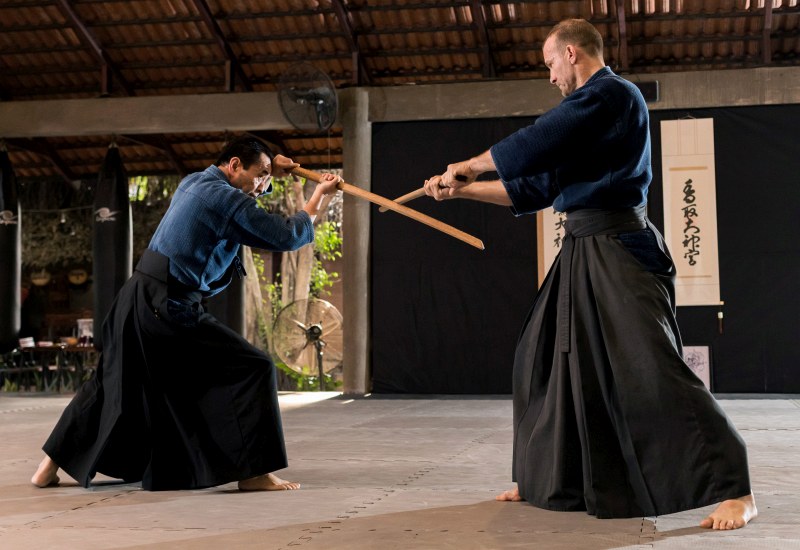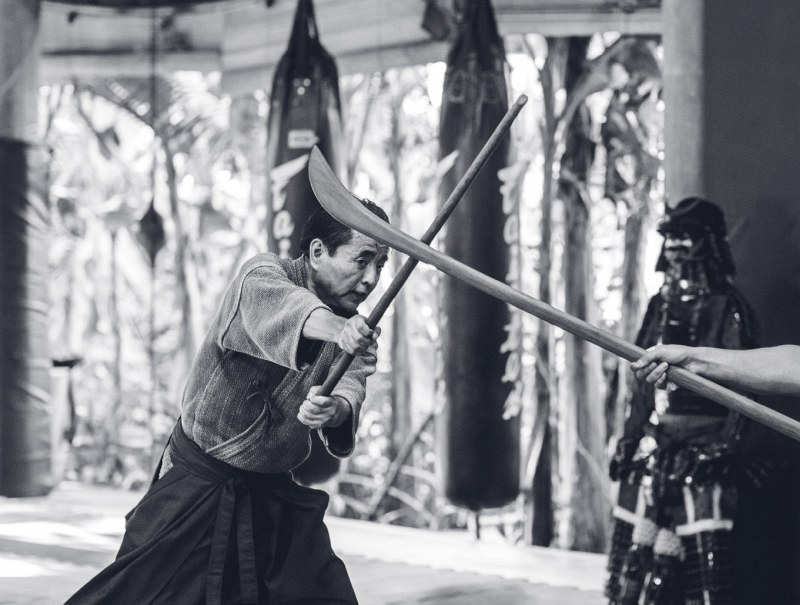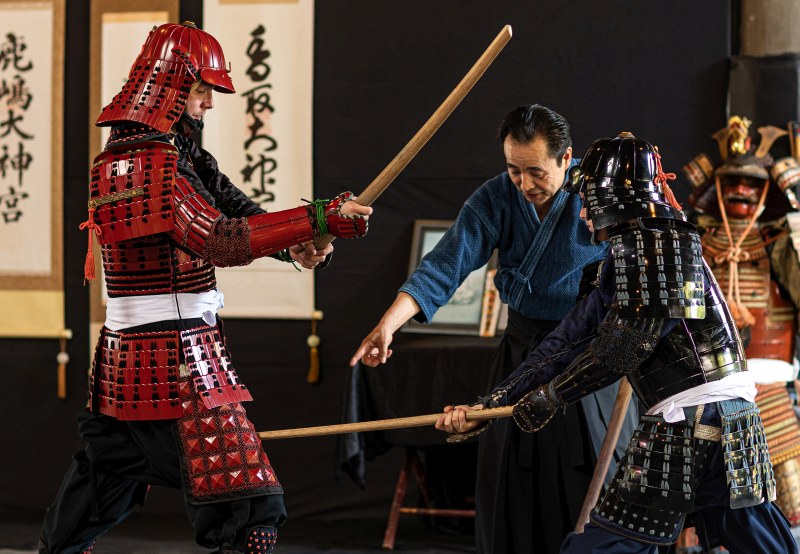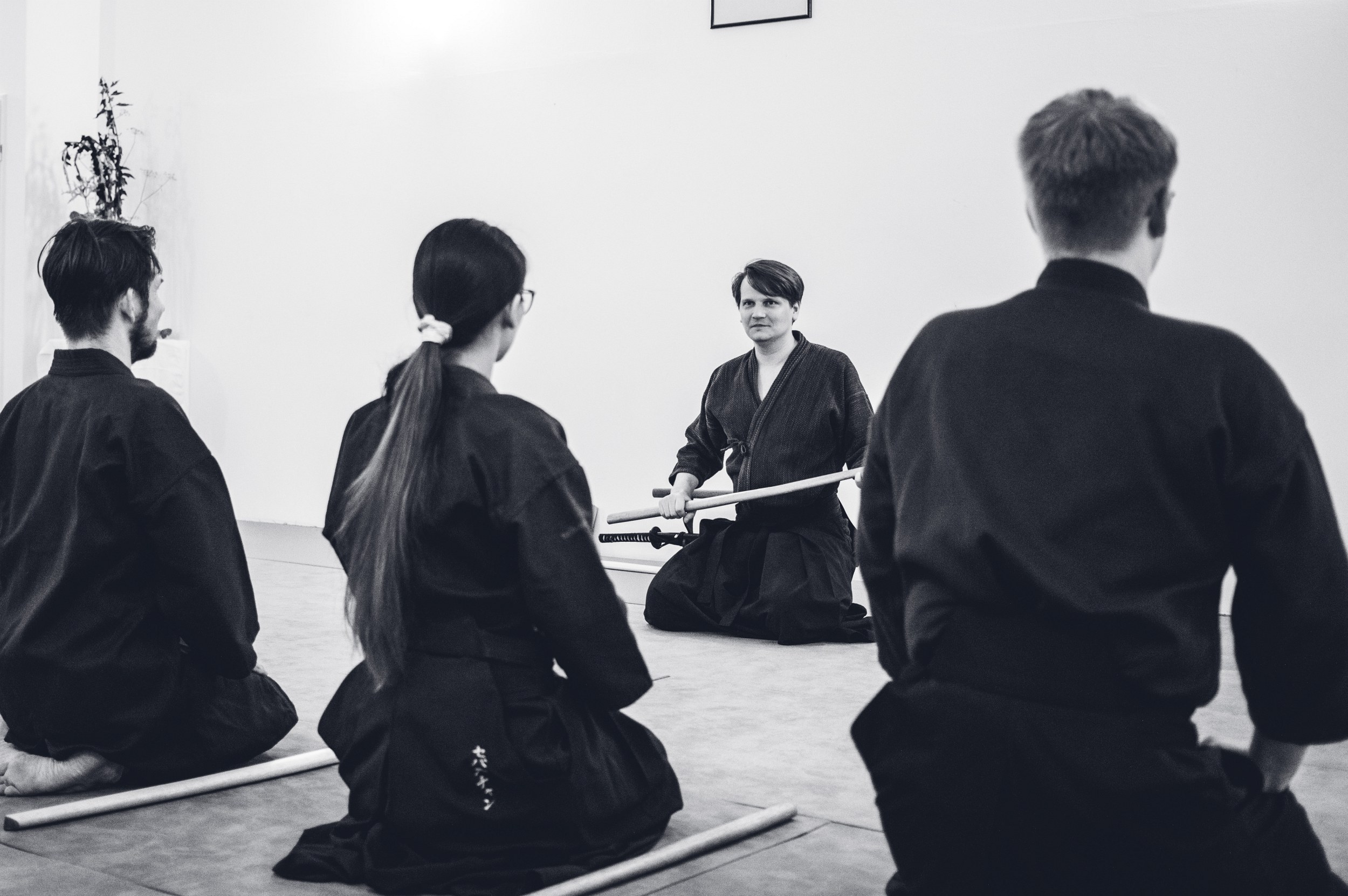
Traditional Training
Even after centuries, the training in Katori Shintō-ryū kenjutsu stays true to the traditional methods of the ancient bushi. The term bushi broadly refers to the warrior class, including samurai and other ranks within the aristocracy. For these warriors, rigorous daily training was not just a discipline but a way of life. Central to their practice was omote, the foundational techniques. This training, often spanning three to four years, demanded meticulous attention to even the smallest details. Through the practice of omote, the bushi honed their weapon skills, following the strict guidelines of their martial tradition and laying the groundwork for their advanced abilities.

The importance of Kata
In the past, training for bushi was highly structured, guided by a key tool known as kata—prearranged choreographies that directed and focused their practice. Kata became, and remain, the cornerstone of training in all forms of bujutsu. It allowed warriors to practice combat techniques safely, reducing the risk of injury or death. This approach continues to be essential today. The kata in Katori Shintō-ryū are notably longer than those in many other traditions, a design that not only builds stamina but also strengthens the body. Kata are repeated thousands of times over years, even decades, until they can be performed automatically, almost unconsciously. This level of mastery allows a practitioner to execute the kata with precision, even when the mind is engaged elsewhere. In actual combat, this ability enables the body to react instinctively while simultaneously assessing the environment, other opponents, and external factors like the position of the sun. This principle is universal across all martial arts.

In kata training, whether using a sword (kenjutsu), staff (bō), halberd (naginata), or other weapons, Katori Shintō-ryū doesn't rigidly prescribe the exact positioning of the arms or legs. Instead, the emphasis is on allowing the body to find its natural balance. The philosophy behind this approach is that each practitioner’s body will naturally assume the most effective stance for maintaining stability and control. This focus on natural movement is a key principle of the art.
All students of Katori Shintō-ryū begin their journey through the curriculum with the foundational kata of omote no tachi and omote iaijutsu. As they progress, they advance to tachiai battōjutsu, omote no bōjutsu, and omote no naginata. This initial training lays the groundwork for more advanced techniques, known as okuden or secret teachings, which enhance precision and skill. These deeper teachings not only refine a practitioner's technique but also build confidence by developing fast reflexes essential for combat.
The Role of Wooden Weapons
To ensure safety, we practice paired kata with wooden weapons, typically made from hardwoods like Japanese white oak. While metal weapons are also used, they are generally reserved for solo practice. Using metal weapons in daily paired training could lead to them breaking, chipping, or becoming damaged, whereas wooden substitutes are more durable and less costly to replace. Despite being substitutes, wooden weapons have their own advantages in combat and can even be superior to metal ones in certain situations.

The Art of Armored Combat
In Tenshinshō-den Katori Shintō-ryū, all of the omote kata are specifically designed as practice for armored combat. Therefore training in yoroi (traditional Japanese armor) is a foundational practice that adds a layer of complexity and realism to the training. It is important to understand how to evade, cut, and deflect strikes while accommodating the armor's weight and limitations. Movements in armor differ slightly from those performed without it due to the armor's restrictions. For example, stances tend to be lower when training without armor. Training in yoroi can be physically demanding, but these challenges lead to stronger stances, more pronounced movements, and an increased focus on building stamina.

But training goes beyond combat techniques; it also involves understanding the practical aspects of yoroi, such as how to properly wear and maintain it. Students are taught the correct sequence of dressing, the specific knots used to secure the armor, and how to balance protection with mobility.

The benefits of training in yoroi are immediately evident. It not only builds physical strength and stamina but also deepens students' appreciation for the historical and cultural significance of the armor. Moreover, the yoroi can be used offensively. Techniques like shoulder checks and strategic use of the helmet demonstrate how the armor itself becomes a weapon.


